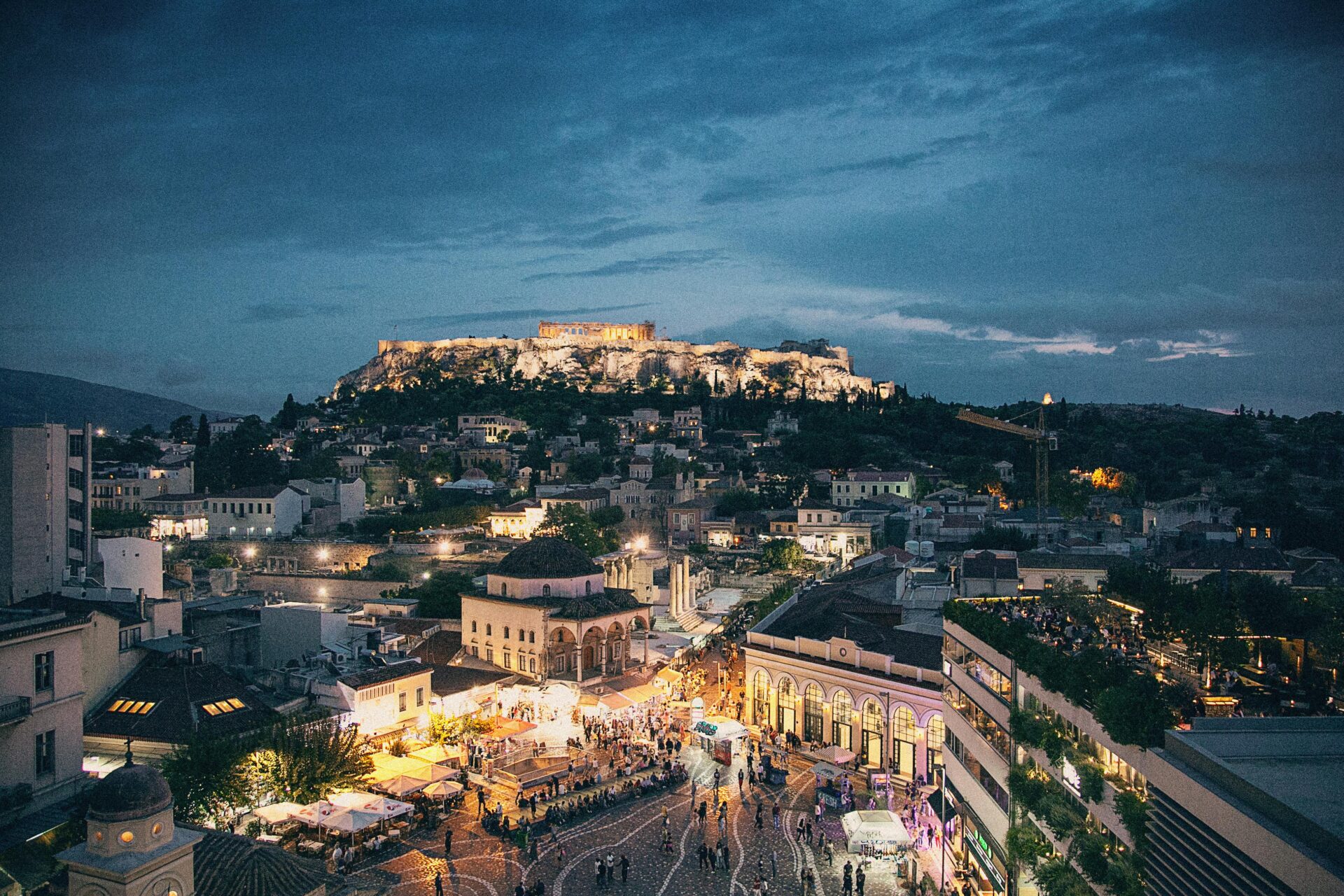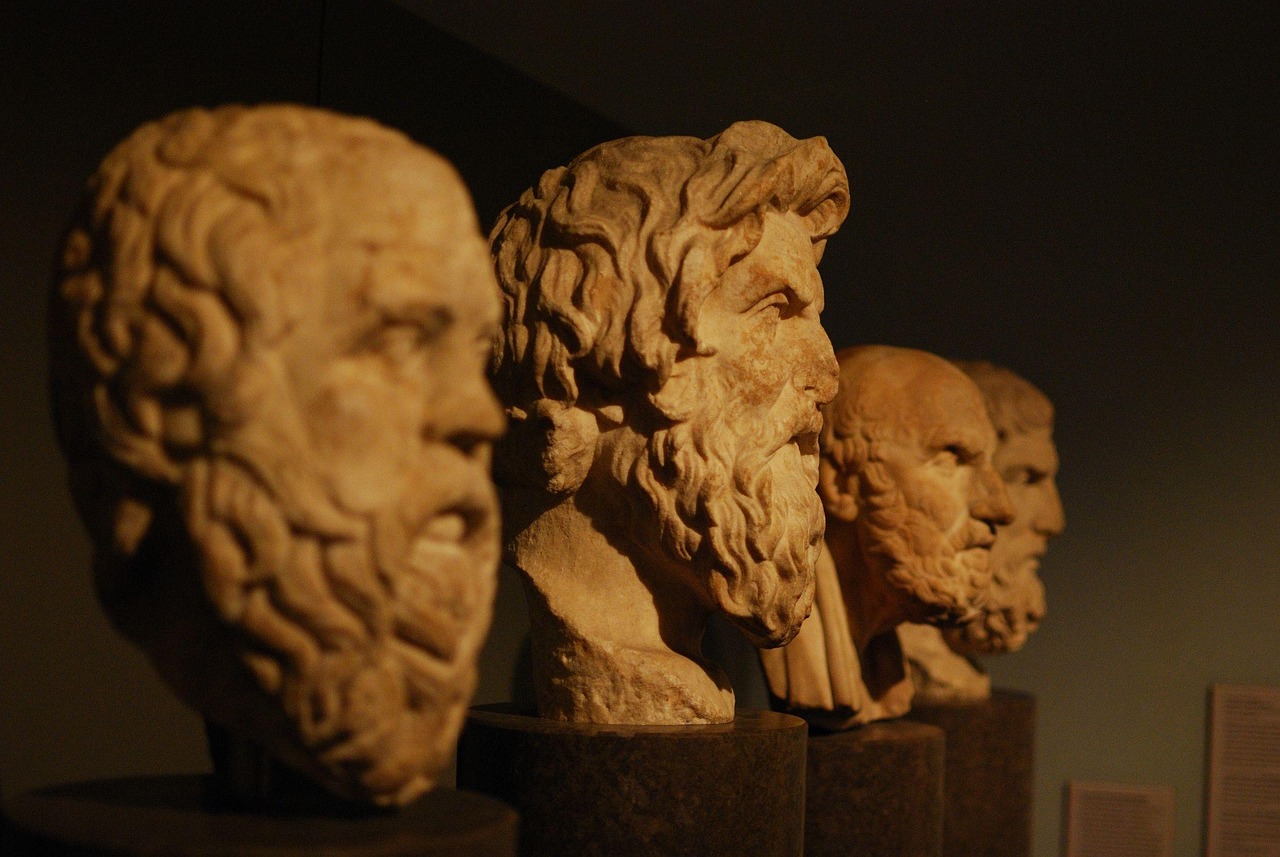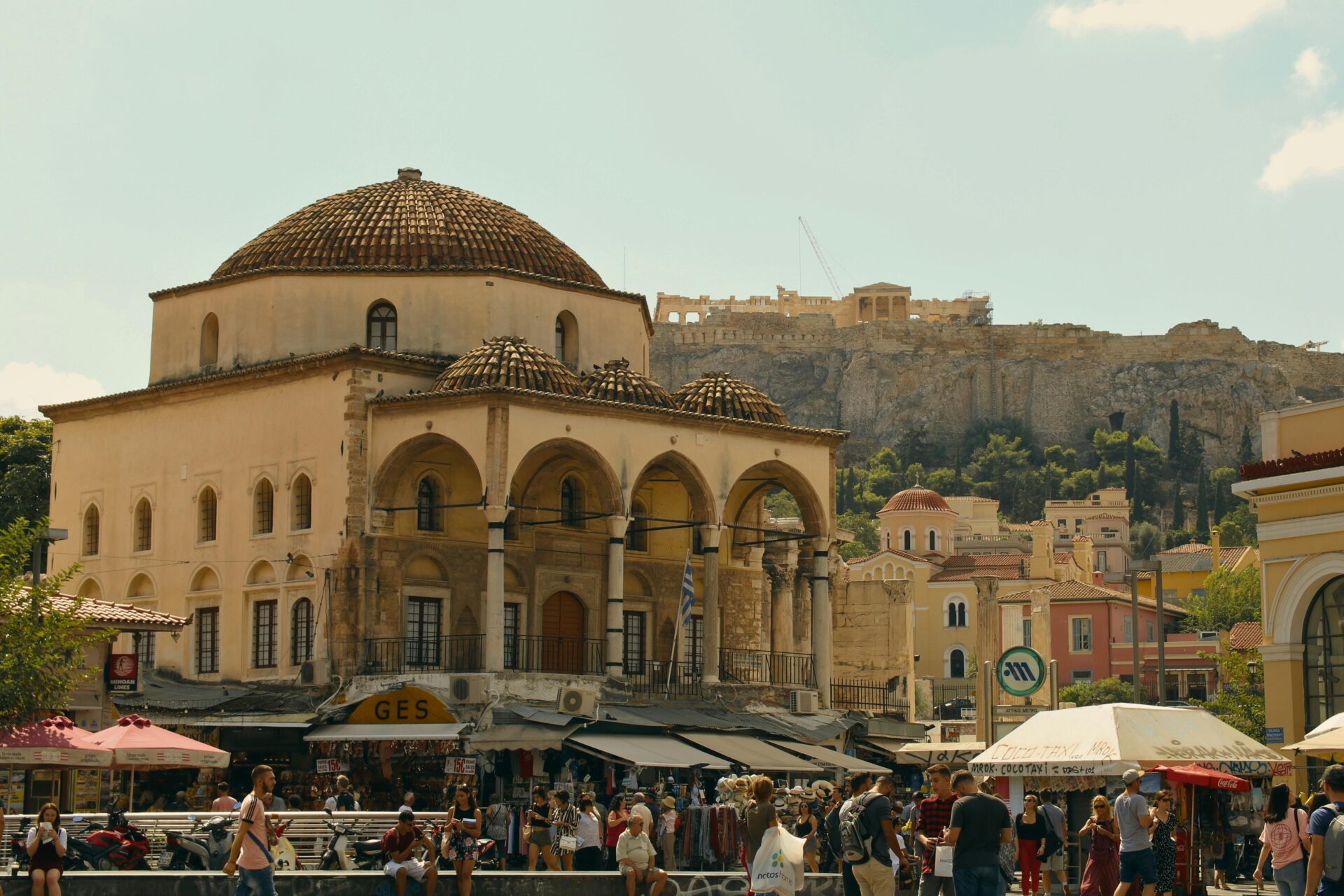The first time I locked eyes with the Acropolis rising above Athens, Greece, something deep inside me just lit up—a thrill and awe that still buzzes in my memory. I stood beneath those ancient stones and felt a connection, not just to history, but to all the people who’ve stood in that same spot, staring up at the birthplace of Western civilization.
Athens pulses with a special energy that seems to spill from the Acropolis down through its winding streets and lively squares. It’s not only about seeing the Parthenon; it’s about walking through centuries of stories, myths, and real lives.

The city’s blend of ancient landmarks and vibrant, messy modern life turns every step into a little adventure. That first glimpse of the Acropolis—especially when sunlight paints the marble gold—is a travel memory I keep chasing. If you’re dreaming of exploring Greece, Athens is the place to start. There’s nothing quite like that moment when history suddenly collides with your own story.
That First Glimpse: Standing Before the Acropolis
Nothing really prepares you for that first real look at the Acropolis. The walk up, the early light, the emotional rush—they all stick with me and shape how I think about travel and happiness.
The Walk Through Athens
Walking through Athens before sunrise almost feels like stepping into another world. The city gets quiet, streets mostly empty except for the occasional moped or footsteps echoing on stone.
I wandered past cafés setting out fresh bread, street vendors unloading baskets of oranges, and stray cats weaving around marble columns. Everyday life here creates a sharp contrast to what waits above.

As I climbed, the Acropolis started to rise above the rooftops—surreal, honestly, but also grounding. Each step pulled me deeper into the city’s ancient past and my own personal history.
History really does unfold with every corner—Byzantine churches, faded graffiti, old walls. The closer I got, the more my excitement built.
Maps and guidebooks can’t capture the raw anticipation that comes from walking these streets just before dawn.
Blue Light at Dawn
At the foot of the hill, I noticed the sky shifting from deep blue to a gentle, pale shade. Blue light washed over the stone, making the whole hilltop glow in this cool, almost magical tone.
The Parthenon and its columns stood outlined against the sky, details clear but dreamlike. I stopped, just letting it all sink in. The natural beauty here is simple, but it hits hard.
Even the worn marble seemed to shine under that blue dawn, a reminder that these old structures are still very much alive.

Locals passed by quietly, some heading to work, others pausing to look up too. This blue light, before the crowds, made the Acropolis feel like it belonged to just a handful of us for a few precious minutes.
A Surge of Happiness and Awe
When my eyes finally met the Acropolis, I felt this sudden surge of happiness and awe. It’s not just seeing famous ruins; it felt like meeting history face-to-face.
I stood there, heart pounding, not wanting to move or even speak. The memory is still sharp—the columns, the broken stones, olive trees swaying in the soft wind.
For a few seconds, everything else faded—the stress, the city noise, even my own worries. That feeling stuck with me, shaping my own story.

Every time I think about wonder or joy from travel, I come back to that exact moment in Athens. The Acropolis, glowing in the morning light, has become part of how I define happiness.
Layers of History: Stories Etched in Marble
Standing in front of the Acropolis, I couldn’t help but feel how every block of marble carries centuries of weight. Its walls tell stories of democrats, poets, soldiers, and citizens who shaped Athens and echoed far beyond.
From Ancient Democracy to Modern Identity
Whenever I look up at the Parthenon, I remember that Athens gave birth to democracy right here. Ancient Athenians gathered on these rocks, their voices weaving the first threads of self-government.
Leaders like Themistocles rebuilt the city after Persian invasions, and their lessons still echo around the Acropolis. Walking around the site, I sense how Athenians once struggled for freedom and identity.
Spartans pushed Athens to define itself, sometimes as rivals, sometimes as catalysts. Marble steps, worn smooth by centuries, now serve as a living reminder of those debates and assemblies.
Crowds from all over the world flock here now. For many, the Acropolis stands for more than ancient glory—it’s a symbol of the fight for voice, belonging, and community, values that still shape Greece.
Philosophers, Poets, and the Weight of Literature
The marble columns aren’t just silent stones—they once heard the footsteps of thinkers like Socrates, Plato, and Aristotle. As I wandered, I pictured philosophers arguing beneath blue skies, their words echoing between columns.
Poets like Ivan Bunin found inspiration here, moved by the view over Athens and the timeless marble glow. The richness of Greek literature and drama is impossible to ignore.
Every carved frieze or inscription hints at stories told around lamp-lit gatherings, ideas that changed how I—and the world—think about meaning and truth.

For anyone visiting, the Acropolis is more than a historic site. It’s a place where words, ideas, and imagination were celebrated.
Bring a notebook or sketchbook; you don’t have to be a poet or philosopher to get swept up in the atmosphere.
Wartime Shadows: World War II and Occupation
One of the most sobering chapters in Acropolis history played out during World War II. Nazi forces occupied Athens and raised their flag over the Parthenon—a message to Greeks and the world. Acts of quiet resistance soon followed.
Manolis Glezos and Apostolos Santas, two young Athenians, tore down the swastika flag in a moment of bravery. Their act became a symbol of Greek resistance, hope, and dignity.

Scars of war linger in the marble, silent but ever-present. I noticed small plaques and markers that hint at these dark times.
They remind visitors that the Acropolis isn’t just about ancient glory—it’s about the struggles for freedom that run through family stories and the larger story of Greece.
Poetry, Myth, and the Lure of the Acropolis
Standing before the Acropolis, every stone and shadow felt charged with the echoes of ancient poets, comic writers, and mysteries that shaped Athens. The place has always been a crossroads for legends, lovers of literature, and that strange magnetism that draws dreamers like me from all over.
Echoes of Homer
When I first looked up at the Parthenon, stories from Homer’s epics seemed to come alive around me. The Acropolis, with its formidable presence, reminded me of the warriors in the Iliad and the explorers in the Odyssey.
These ancient poems shaped Western literature and still influence how we see Greece. Walking between the columns, I half-expected to hear Homer’s verses carried on the wind.
Many believe people recited Homer’s stories near places like this, under skies as vivid as lapis lazuli. The Acropolis feels like an echo chamber, filled with myth and memory.

Sitting on a worn marble step, I understood why so many poets have tried—and sometimes failed—to capture this view. It’s not only a monument but a place where stories linger.
Comic Relief: Aristophanes and Satire
Not every story around the Acropolis is grand and serious. Satirists like Aristophanes brought laughter to ancient Athens, poking fun at politicians, knights, and even the soldiers’ beloved cavalry.
Aristophanes staged his biting plays in theaters at the foot of the Acropolis. His humor and exaggeration still reach across centuries.
Touring the old Theater of Dionysus, I pictured crowds howling with laughter at the sharp jokes in The Knights. Aristophanes’s satire taught Athenians to question—and laugh at—their own society.

That comic spirit lives on. Local guides slip in tongue-in-cheek stories about political squabbles and chaos from ancient times. For me, it made the Acropolis feel less remote, more alive, and unmistakably human.
Lapiz Lazuli Skies and the Muse of Madness
Some say the Greek sky turns lapis lazuli blue at dusk. From the heights of the Acropolis, I watched the sun fade and the sky radiate that vivid blue.
The sight gave me this odd, euphoric thrill—a kind of “madness” poets sometimes call the inspiration of the Muses.
Artists and writers have come here for centuries, chasing that feeling. I felt it too—a restless urge to create, to capture the view in words or sketches.
The Acropolis is a magnet for dreamers because of this almost physical pull. If you’re seeking creativity, bring a notebook.

The mix of history, color, and atmosphere can spark something, whether you’re a poet or just someone who likes to daydream with a pen in hand.
The Allure of Occult and Mystery
There’s something mysterious about walking the Acropolis at twilight. Legends speak of hidden secrets beneath the stones—ancient rituals, unusual symbols, and even stories of the occult.
The site’s layers of history almost invite wild speculation. During my visit, local myths about secret passages and lost treasures added a tinge of excitement to every shadowy corner.
Some visitors claim to sense a lingering energy, as if centuries of gatherings—some public, others hidden—left a spiritual imprint.
Whether facts or fiction, these mysteries only deepened my fascination. Even if you don’t believe in hidden powers, letting your imagination run a little wild makes the Acropolis even more spellbinding.
It’s a reminder that every monument keeps some stories to itself.
Personal Reflections and Lasting Connections
Seeing the Acropolis for the first time left more than a memory—it changed the way I see the world and the people beside me. The connections I made on that trip shaped how I approach friendship, love, and challenges.
Love Stories and Shared Discoveries
Traveling with my girlfriend to Athens started as a spontaneous idea one chilly night in Chicago. Standing together beneath the Acropolis made our relationship feel new again.
We discovered more than ancient ruins; we learned about each other’s curiosity, patience, and sense of wonder. Those moments surrounded by history created shared memories that still shape our relationship.
Walking through narrow streets or sitting at a shaded café, we found joy in little discoveries—a hidden bakery, a local myth about the hill.

Athens is full of couples, some whispering stories, others debating history. Sharing discoveries brought us closer, a sense of teamwork I hadn’t felt on trips to New York.
Every glance exchanged as we explored felt like a quiet promise to keep chasing these moments together.
Travel Companions: From Friends to Fools
Arriving at a rocky Greek campsite with friends, I realized travel brings out both the best and the foolish in us. Coming from Chicago, most of my group wasn’t ready for the dry heat or uneven paths.
We joked about being “urban campers,” out of place but eager to figure things out together. Late-night talks under the stars turned into moments I wish I could bottle.
Once, we took a wrong turn and ended up at a small neighborhood festival instead of our planned destination. It was embarrassing at the time, but that night of local music and new food is now a highlight.
In those unscripted moments, our friendship grew stronger. Even when we acted like fools, we laughed it off, realizing that getting lost together makes the best stories.
Those mishaps reminded me that new places reveal unexpected sides to people you thought you already knew.
Lessons in Challenge and Endurance
Walking up to the Acropolis showed me a kind of endurance I didn’t realize I had. That steep climb, especially under the harsh midday sun, isn’t for the faint of heart.
Every single step gave me this little jolt of accomplishment. I kept thinking, wow, sometimes the best rewards really do come from pushing through big challenges.
That day, memories of my old summer camp outside New York City popped into my head. Back then, those rocky trails built up my confidence, one wobbly step at a time.
Standing at the top of the Acropolis, I felt that same rush—pride mixed with a bit of gratitude. It’s funny how old feelings come back in new places.

Patriotism seemed to pulse all around me as Greek flags flapped from balconies below. Even as just a visitor, I couldn’t help but feel inspired by the spirit woven into this place and its people.
Every challenge along the way—big or small—somehow became part of my story. The view just felt richer because of it.
Unforgettable Local Experiences Near the Acropolis
Athens hums with life, even beyond the ancient stones of the Acropolis. The neighborhoods nearby burst with local flavors, historic markets, and stories that feel almost as old as the ruins themselves.
Street Berries and Greek Winter Treats
As I wander the side streets near the Acropolis, I spot local sellers with baskets of fresh berries. In winter, the stands change—suddenly there are roasted chestnuts, hot sesame bread rings, and sweet koulouri everywhere.
I love how these simple snacks warm up my hands as I walk. On chilly days, I grab a cup of cinnamon-spiced tea from a smiling vendor—there’s just something about sipping it while watching the city swirl by.
Sometimes, I’ll sit on a low stone wall, sharing a handful of berries with friends. We watch the view and let the moment linger.
- Popular street snacks:
- Fresh berries (spring/summer)
- Roasted chestnuts (winter)
- Koulouri (sesame bread rings)

All those fresh local flavors, mixed with the buzz of the area, leave a warm impression every single time.
Navy Tales, Leather Markets, and Modern Life
Long ago, ancient sailors filled Athens’ port, and their stories still drift up to the Acropolis neighborhood. Near Ermou and Monastiraki, I listen to street musicians and watch artists painting old navy ships or Poseidon’s trident.
The leather markets here are something else. I weave through alleys packed with stalls selling hand-tooled leather sandals, wallets, and bags.
The sharp, earthy smell of leather hits me as soon as I step in. Craftsmen chat, swapping quick stories—some about navy days, others about their tools.
It’s wild to see tradition and modern Athens collide: leather goods right next to phone cases and brand-new sneakers.
- Best spots:
- Monastiraki Flea Market
- Adrianou Street

The mix of old crafts, sea tales, and daily city rush gives this place a personality you can’t really forget.
Tracing Ancient Hunting Grounds and Bears
Southwest of the Acropolis, Filopappou Hill sits like a green oasis. Ages ago, it served as hunting land for the ancients.
As I walk these leafy trails, I spot signs explaining how wild animals—boar, even bears—once roamed these woods.
I picture hunters with spears chasing salmon down the Ilissos river or waiting for deer in hidden spots. Those days are long gone, but a wild spirit still lingers.

Now, the park feels peaceful. Locals jog under thick pine trees or rest near old carved stones.
Sometimes, I pause by ancient cave shrines where Greeks honored Artemis, goddess of hunting. Just a little farther, the city’s noise fades, and it’s easy to forget you’re in the middle of Athens.
Legacy and Inspiration: The Acropolis in Modern Imagination
The Acropolis keeps sparking imagination and wonder, tying the past and present together in ways that surprise me. From science and literature to comedy and personal reflection, its influence stretches far beyond Athens’ hills.
Carl Sagan and the Poetry of Science
Whenever I think of the Acropolis, I can’t help but remember how Carl Sagan described places like this. He saw the Parthenon and its neighbors as more than relics—they were milestones of human curiosity and hope.
For Sagan, science and art met on these marble stones. Visiting the Acropolis, I caught myself imagining the philosophers and astronomers who once worked here.
Sagan’s words—about “standing on the shoulders of giants”—echoed in my mind as I wandered. This hill isn’t just ancient ruins; it’s proof of our oldest questions about the universe.
I scribbled a few notes to myself, trying to capture that feeling Sagan described: awe tangled up with reason, wonder nudged by curiosity. Every step made me feel like I was joining that endless search for wisdom.
From Ancient Knights to Contemporary Comedy
The Acropolis has weathered centuries of war, legend, and occupation. Over time, it’s become more than a symbol of power or beauty.

It creeps into stories about knights, philosophers, and regular folks making their way through history. Lately, I see its image pop up in the strangest places—late-night TV, stand-up comedy, even social media.
Last year, I watched a comic riff on the crowds climbing the Acropolis, comparing lost tourists to ancient heroes. The laughter mixed with a kind of respect for the place—funny how even jokes can keep history alive.
Sitting on the steps, I realized these modern moments connect us to everyone who’s ever stood here. Each story, whether serious or silly, adds a new layer to its legend.
Ebooks, Memories, and the Endless Chase
I keep reaching for an ebook or a travel memoir, especially if it’s set in Athens. Writers talk about their first glimpse of the Acropolis—the way sunlight slides over the stone in the morning, or how it glows gold at sundown.

Their words stir up my own memories and somehow, every visit feels new. When I travel, I toss an ebook in my bag.
Sometimes, I’ll stop halfway through a hike just to read a quick myth or a little local trivia. These digital moments fill in the blanks of my journey and help me chase that first rush of wonder.
Mixing memory, text, and experience turns each trip into this ongoing loop of discovery. Every time I return, I get a jumble of old stories and new impressions, like digital diary notes that never quite line up.
For me, the Acropolis is never just one thing. It’s a memory, a story, a highlighted ebook passage, and honestly, a feeling I can’t shake.

